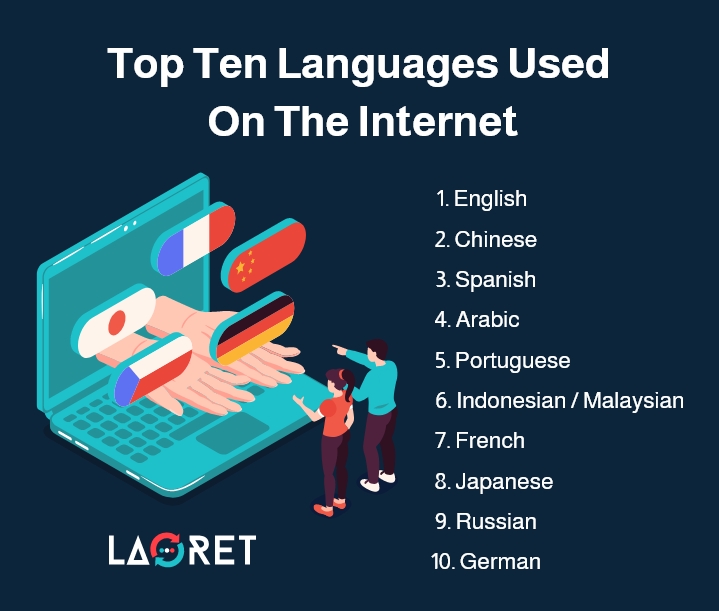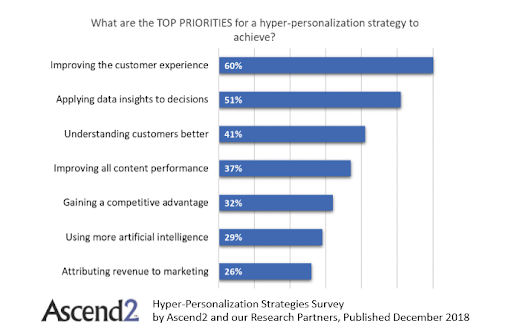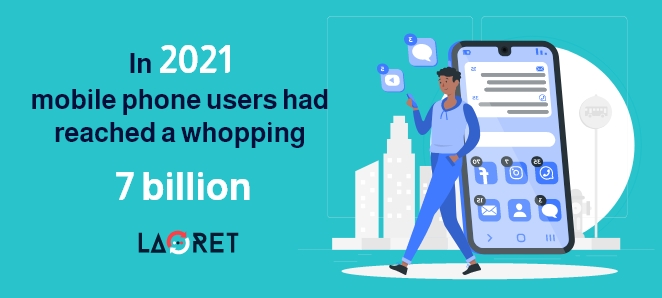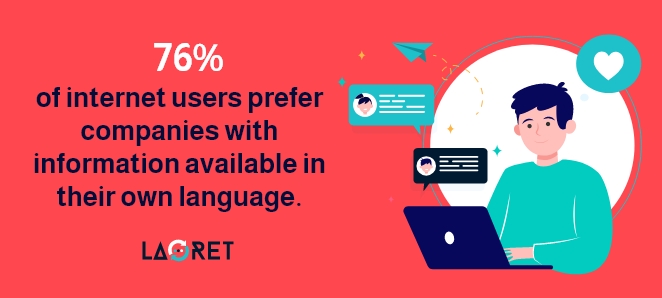Multilingual Marketing: The Top 5 Questions Answered
Every business expansion effort requires a solid marketing plan. But if you are seeking international growth and your business is planning to expand in foreign territories, then you’ll need effective multilingual marketing.
Marketing isn’t exactly a breeze. Add different languages and cultures into the mix, and multilingual marketing gets more complex. If you are about to embark on this journey, you’ll find here the answers to top 5 questions you are likely to have during the process. We know because these are the most pressing questions that our clients are always concerned about.
Multilingual Marketing: The What And The Why
Multilingual marketing involves promoting your brand, products, and services through creating targeted content and campaigns in multiple languages. It keeps the local language and dialects as well as cultural contexts in mind.
Multilingual marketing can be a very powerful business expansion tool and when done right, it can boost user engagement, brand advocacy, as well as ROI.
Promoting your services and products in your own language is a familiar territory, but stepping into the language nuances and cultural subtleties of people in different countries and regions can be an uncharted journey. That’s what makes the fine line between attracting and enticing your new users and drawing them away and even offending them.
One of the successful global brand stories is Coca Cola. The brand with a revenue of around 39 billion1 has gone global by applying a flawless strategy that is uniquely adapted to each culture. And Coca-Cola’s success can be summed up in 3 major strategies.
- Packaging is adapted to local preferences, but they also know what parts to keep the same to be recognizable. For example, they will not change their iconic red color with the white logo, but they will change the nationality of the people posing with the drink.
- Brand name, “Coca Colaâ€, however recognizable, can also be altered depending on the country. In China, for example, the drink is known as kekoukele. This clever play on words still sounds like Coca cola but uses the words Ke (can) and Kou (mouth).
- Since 2011, Coca Cola has been very active in its marketing campaigns and has created the memorable videos they are so known for: the effective “share happiness†ads. Even beyond the U.S., Coca Cola makes ads and videos that stress the importance of family and sharing. Just have a look at this 2017 video launched for Chinese New Year:
The moral lesson is multilingual marketing isn’t about translating your brand’s content into a new language and calling it a day. It’s about adapting your product for local audience and finding out what matters to them, but also knowing what makes your brand unique. Some designs or words may not even need to be changed, If they were, it may actually undermine your brand credibility rather than boost it.
5 Key Questions on Multilingual Marketing Get Answered
1. Which Markets To Choose?
And how many languages should you translate into? You may also be wondering, “Can’t I just translate for the top languages out there? Technically, yes. But that’s not a well-thought decision.
For one thing, there are top ten languages used on the Internet. The number might be overwhelming in terms of resources and cost, which might prompt some businesses to call the whole thing off. For another, just because Chinese or Spanish, for instance, are widely used doesn’t mean they make a strong prospect for your services and/or products.

Instead, there are some insights that could help you take the right track for your business and really make your brand personal and effective for markets that are ready to receive services just like yours.
In 2018, Ascend2 published a thorough report on hyper-personalization strategies. Hyper personalization refers to the process of personalizing your content in a way that gets the best results and the highest levels of engagement.
According to their findings, improving customer experience (60%) and applying data insights to decisions (51%) are the top priorities for a sound hyper-personalization strategy.

Let’s first talk about applying data insights to your decisions, because this can be an invaluable tool for you to identify markets that will be the most profitable for you. The two most effective ways we recommend when identifying markets through data are the following.
- Make good use of your website tools. Check Google Analytics and Google Console and see where your page hits are coming from. Your top hits may not even speak English as a native language!
Are you getting quite some visits from France with a high bounce rate? Then you should consider localizing your website for the French market. - Research where your industry and competitors are performing and how you can compete with what is already out there. This is where multilingual marketing localization can really help, since the experts who will be localizing your materials, will know exactly what the market will respond to.
More effective, perhaps, is when you apply data strategies to mobile users.
In 2021, mobile phone users had reached a whopping 7 billion3. Just think of all the data you can collect from so many users by applying the geo-fencing strategy.

Geo-fencing allows you to send multilingual advertising and messages to a users exact location. When the users enter a certain location, you have virtually targeted their wi-fi, cellular data, GPS, or RFID to trigger a response or an action. While geo-fencing is commonly used as part of a fully fleshed out campaign, it can be an excellent way to test out wants and needs in certain locations you think might be interesting for you.
2. Should I Localize My Social Media Posts?
Let’s focus on that number one priority on Ascend2’s report now, customer experience. Research shows that 76% of internet users prefer companies with information available in their own language4. And when it comes to social media, this becomes extra important.

Social media content is designed to make potential customers see you are not just a company selling them a product. You are sharing content in a space that is commonly reserved for private moments and relaxation, designing this content in a way that doesn’t invade, but instead entertains and engages. How could you achieve this in a language that is strange to them?
Social media translation is more than localizing the content for your posts, it should follow a strategy to be effective. This includes the following.
- Create Social Media Pages for Specific Countries, if you can afford it. This is most likely to bring you the biggest ROI. However, if you choose to develop local pages, you will need to make sure you can hire native social media marketing and multilingual digital marketing experts to run them for you.
- Send out Targeted Posts and Segment your Local Audiences,5 if you are not ready to invest in localized pages. This way, you can localize specific social media posts and send to the right audience through geo-targeting. If you are using Facebook, you will be able to segment your audience and organize them according to gender, job, age, and so on.
- Any translations will require native, in-country experts to ensure a fluent, relevant, and engaging copy that guides your audience to the actions you’d like them to take.
Pro Tip! Want to get a more detailed overview of what your social media strategy should entail? Check out our blog Social Media Translation: 7 Essential Steps To Get It Right!
3. Do I Need Transcreation?
You might, but it is also possible that you will just need localization services. We always like to stress that while both services can be very interesting for multilingual marketing, transcreation is more specialized.
For example, if you want to develop a marketing campaign from scratch and do not have source content to share with a language services provider (LSP), transcreation will be perfect for you since it leverages native copywriters. If you have source content, localization services may be best for you. Learn more about which service to go for in our blog Transcreation: When You Should Go For it And When You Should NOT!
4. How Do I Get My Website Noticed?
When running multilingual marketing campaigns, you will be directing new internet users to your website. So, you will need to make sure that your website is in top shape by applying the following practices:
- Website Localization, which involves the linguistic, cultural, and technical adaptation of your website to foreign markets. Everything from content to images, videos, colors, and performance will be taken into translated and localized to meet the preferences of your new target audience. This means that native linguists as well as localization engineers play an important part.
- For any successful multilingual website, International SEO strategies will also need to be applied, so that the website, even when searched outside of a multilingual marketing campaign, will stand out and rank in native engines.
This will involve careful keyword research and localization for product keywords, informational keywords, and navigational keywords. Learn more about the importance of SEO translation in our blog How To Apply International SEO To Your Multilingual Web Content
5. Can I Use Machine Translation For My Marketing Campaigns?
We’d like to end with a big question we get asked a lot, whether multilingual marketing strategies and Machine Translation (MT) mix.
The fact is that for content as specific and targeted as multilingual marketing content, we would generally advise against MT. This is because MT is not yet trained in content that includes cultural references, puns, or a more prosaic style or that might be humorous or sarcastic in tone. And all of these can be present in marketing content.
That being said, we understand that MT is increasing in popularity because of the promise of high-speed translations, which in this competitive business culture sounds very appealing. That is why we would like to introduce Machine Translation Post-Editing (MTPE), more specifically, Full Post Editing, if you ever choose to go for Machine Translation.
With MTPE, the content is run through an MT engine, but a human post-Editor will review and edit the content where needed. Depending on the content type, either light post editing or full post editing is applied. Where light post editing mainly does a quick grammar check and weeds out glaring contextual errors, full post editing applies stylistic changes, checks for cultural potency, and confirms loyalty to the source text.
While this may sound like a great way to go, we still want to advise caution in the unique case of multilingual marketing content. While full post-editing takes cultural messaging and style into account, if too many changes are needed and the content will basically need to be rewritten to reach its potential, it will be a lot easier to simply commit to human translation. However when in doubt, you can consult and discuss your options with your LSP!
Pro tip! Learn more about the differences between light post editing and full post editing in our blog Light Post-Editing Or Full Post-Editing: Which Way To Go?
Effective Multilingual Marketing Needs A Strong Strategy
Multilingual marketing can be complex and ambitious, but with the right strategy and team, you have a great chance of becoming a powerful player in your industry. You should be very aware of how you create your multilingual content and select the right service, the best experts, and the ideal market. This will require a combination of marketing translation services and SEO translation to make sure your website is ready to perform and rank in native search engines.
If you think now is the time you embark on your multilingual marketing journey, Laoret can help.Request a quote and get started on your next multilingual marketing project!
References
- The Coca-Cola Company’s net operating revenues worldwide from 2007 to 2021
- Ascend2: Hyper-Personalization Strategies
- Forecast number of mobile users worldwide from 2020 to 2025
- Survey of 8,709 Consumers in 29 Countries Finds that 76% Prefer Purchasing Products with Information in their Own Language
- Facebook Custom Audiences Destination






